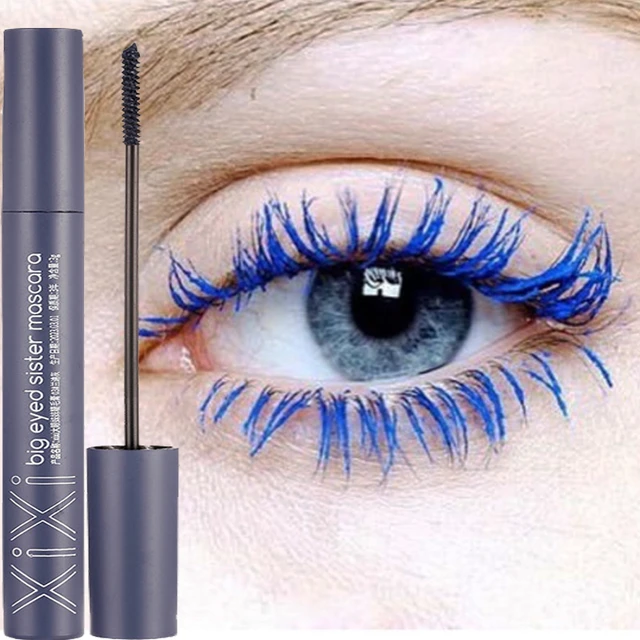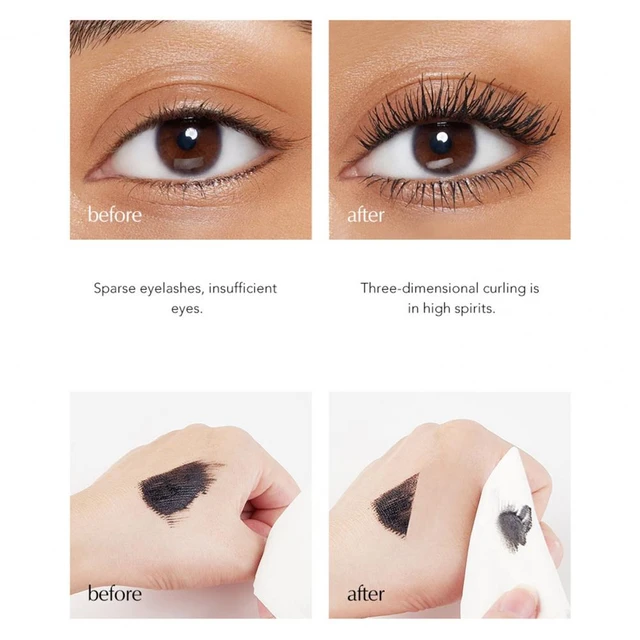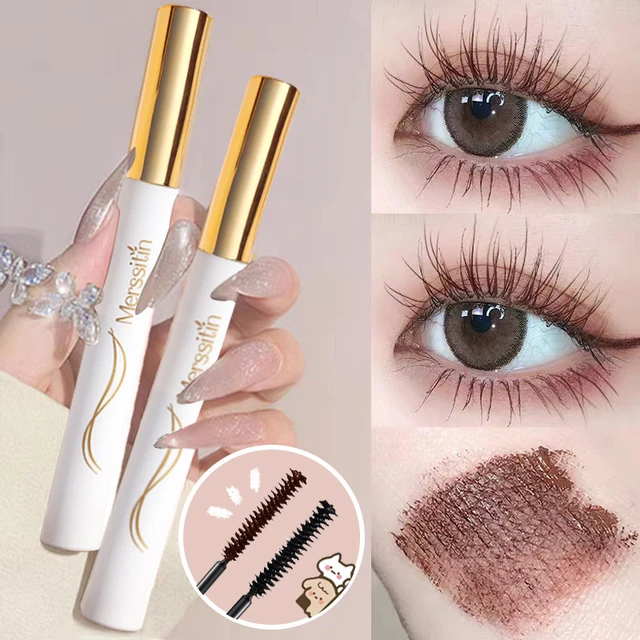Mascara is an essential part of many people’s daily beauty routines, offering volume, length, and definition to lashes. However, knowing how often to change mascara is crucial for maintaining eye health, preventing infections, and ensuring optimal performance of the product. This comprehensive guide will provide you with detailed information on the appropriate mascara replacement frequency, the risks of using old mascara, tips for extending its lifespan, and recommendations for proper makeup hygiene.
 Some common types of mascara:
Some common types of mascara:
There are several types of mascara available, each designed to achieve different effects on the lashes. Here are some common types of mascara:
Lengthening Mascara:
Lengthening mascaras are formulated to make the lashes appear longer by adding fibers or lengthening agents to the lashes. They typically have a thinner consistency and a brush with longer bristles to separate and extend each lash.
Volumizing Mascara:
Volumizing mascaras are designed to add fullness and thickness to the lashes. They usually have a thicker formula and a brush with dense bristles to deposit more product and create a fuller lash look.
Curling Mascara:
Curling mascaras are formulated to lift and curl the lashes. They often contain polymers or waxes that help hold the curl and maintain the shape of the lashes throughout the day. The brush of a curling mascara is typically curved or angled to assist in curling the lashes during application.
Waterproof Mascara:
Waterproof mascaras are formulated to resist water, sweat, and smudging. They are ideal for humid or rainy environments and for those who have teary eyes or want long-lasting wear. Waterproof mascaras have more durable and water-resistant formulas that require special makeup removers for removal.
Lengthening and Volumizing Mascara:
Some mascaras combine both lengthening and volumizing properties to give a dramatic effect to the lashes. These mascaras often have a combination of lengthening and volumizing brushes or formulas to create both length and fullness.
Define and Separate Mascara:
Define and separate mascaras are designed to separate each lash and create a more natural, defined look. They generally have thinner formulas and brushes with shorter, comb-like bristles to coat and define each lash individually.
Lash Primer Mascara:
Lash primer mascaras are applied before regular mascara to enhance the effects of other mascaras. They often have conditioning formulas that nourish and protect the lashes while adding volume, length, or curl.
Colored Mascara:
Colored mascaras come in various shades beyond traditional black or brown, allowing for creative and vibrant eye makeup looks. These mascaras can be used alone or layered over regular mascara for a pop of color on the lashes.
Remember to select a mascara that suits your desired lash effect, eye shape, and personal preferences. The shape and size of the mascara wand also play a role in achieving the desired look, so consider experimenting with different mascara types and brushes to find the best match for your lashes.
 Why Regularly Changing Mascara is Important
Why Regularly Changing Mascara is Important
Eye Health
Risk of Infection: Mascara can accumulate bacteria over time, which can lead to eye infections such as conjunctivitis (pink eye).
Prevention of Irritation: Old mascara can cause irritation and redness, especially for those with sensitive eyes.
Product Performance
Clumping and Flaking: Mascara tends to dry out, leading to clumping and flaking, which affects the overall look.
Effectiveness: Fresh mascara offers better application, length, and volume compared to dried-out or expired products.
Hygiene
Bacterial Growth: The moist environment of mascara tubes is conducive to bacterial growth, making regular replacement a necessary practice.
Clean Application: Fresh mascara ensures a clean application, reducing the risk of contamination and eye issues.
How Often to Change Your Mascara
General Rule of Thumb
Every 3 Months: It is generally recommended to replace your mascara every 3 months to minimize the risk of bacterial contamination and ensure product effectiveness.
Signs It’s Time to Replace Your Mascara
Change in Texture
Dry and Clumpy: If the mascara becomes dry, clumpy, or difficult to apply, it’s time to replace it.
Strange Odor
Unpleasant Smell: An unusual or unpleasant odor is a sign that the mascara has gone bad and should be discarded.
Irritation
Redness and Itching: If you notice redness, itching, or irritation after applying mascara, discontinue use and replace it.
 Risks of Using Old Mascara
Risks of Using Old Mascara
Bacterial Infections
Conjunctivitis: Old mascara can harbor bacteria that cause conjunctivitis, a highly contagious eye infection.
Styes: Bacteria can also lead to styes, painful lumps that form on the eyelid.
Allergic Reactions
Redness and Swelling: Expired mascara can cause allergic reactions, leading to redness, swelling, and discomfort.
Tearing and Itching: Allergic reactions to old mascara can result in excessive tearing and itching.
Subpar Performance
Poor Application: Old mascara does not perform as well, leading to clumping, flaking, and incomplete coverage.
Discoloration: Mascara that has gone bad may change color, affecting the final look.
Tips for Extending the Lifespan of Your Mascara
Proper Storage
Cool, Dry Place: Store mascara in a cool, dry place away from direct sunlight to keep it fresh for longer.
Avoid Humidity: Humidity can cause mascara to deteriorate more quickly, so avoid storing it in the bathroom.
Hygienic Application
Clean Applicator: Ensure the mascara applicator is clean before each use to minimize bacterial transfer.
Avoid Pumping: Do not pump the wand in and out of the tube, as this introduces air and accelerates drying.
Seal Tightly
Secure Cap: Always ensure the mascara cap is tightly closed to prevent it from drying out.
Check Seal: Regularly check the seal to ensure it is functioning correctly.
Avoid Sharing: Do not share mascara with others to prevent the spread of bacteria and infections.
Personal Use Only: Keep your mascara for personal use only to maintain hygiene.
Proper Makeup Hygiene Practices
Clean Brushes and Applicators
Weekly Cleaning: Clean makeup brushes and applicators weekly using mild soap and water to prevent bacteria buildup.
Dry Thoroughly: Allow brushes and applicators to dry thoroughly before storing them.
Regularly Replace Other Makeup Products
Foundation and Powders: Replace foundation and powders every 6-12 months to maintain hygiene.
Lip Products: Replace lip products every 6-12 months to prevent bacterial growth.
Eye Makeup Safety
Avoid Waterline: Avoid applying mascara or other eye makeup to the waterline to reduce the risk of irritation.
Remove Makeup: Always remove makeup before bed to prevent eye irritation and infection.
 FAQs about Mascara Replacement
FAQs about Mascara Replacement
How Do I Know If My Mascara is Expired?
Check Expiry Date: Look for an expiration date on the packaging and adhere to it.
Observe Changes: Monitor changes in texture, smell, and color as indicators of expiration.
Can I Revive Old Mascara?
Avoid DIY Methods: While there are DIY methods like adding saline solution to revive dry mascara, it’s best to replace it to ensure safety and effectiveness.
Use Fresh Product: Investing in a fresh mascara is the safest option for your eye health.
What If I Rarely Use Mascara?
Track Usage: Even if you rarely use mascara, it’s still important to replace it every 3 months to prevent bacterial growth.
Mark Opening Date: Write the date of first use on the tube to keep track of its age.
Are There Mascara Formulations with Longer Shelf Lives?
Preservatives: Some mascaras contain preservatives that extend their shelf life, but it’s still advisable to follow the 3-month rule.
Waterproof Mascaras: Waterproof mascaras may have longer shelf lives, but still require regular replacement due to their resistance to water and potential for bacterial growth.
Popular Mascara Brands and Their Recommendations
Maybelline
Shelf Life Recommendation: Maybelline advises replacing mascara every 3 months for optimal performance and hygiene.
Popular Products: Maybelline offers a wide range of mascaras, including Great Lash and Lash Sensational.
L’Oreal
Shelf Life Recommendation: L’Oreal recommends a 3-month replacement period to prevent contamination and ensure effectiveness.
Popular Products: L’Oreal’s Voluminous and Telescopic mascaras are popular choices among consumers.
CoverGirl
Shelf Life Recommendation: CoverGirl suggests replacing mascara every 3 months to maintain eye health and product quality.
Popular Products: CoverGirl’s LashBlast and Clump Crusher mascaras are well-loved.
Benefit Cosmetics
Shelf Life Recommendation: Benefit recommends a 3-month replacement cycle to ensure safety and performance.
Popular Products: Benefit’s They’re Real! and Roller Lash mascaras are top picks.
 Conclusion
Conclusion
Replacing mascara regularly is crucial for maintaining eye health, ensuring product performance, and practicing good makeup hygiene. By following the recommended 3-month replacement rule and paying attention to signs of expiration, you can prevent infections, irritation, and subpar makeup results. Proper storage, hygienic application, and avoiding shared use are simple yet effective practices for extending the lifespan of your mascara and keeping your eyes safe.
Incorporating regular cleaning of makeup tools and adhering to good makeup hygiene practices will further enhance your beauty routine, ensuring that your mascara, and other beauty products, remain safe and effective. By following the comprehensive guidelines outlined in this article, you can enjoy beautifully defined lashes while safeguarding your eye health. Happy makeup application!
